Ventral Body Cavity
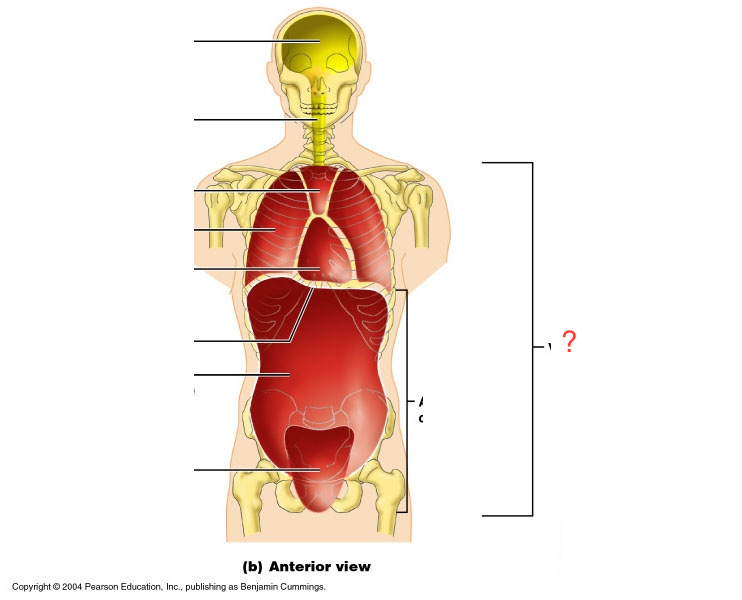
Composed of the superior thoracic cavity, and inferior abdominopelvic cavity. The dome-shaped diaphragm separates the two.
Thoracic Cavity
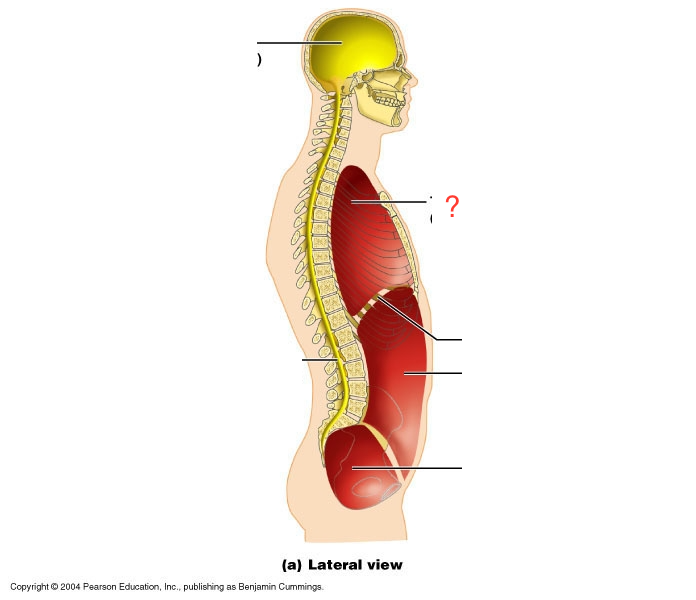
Separated from the rest of the ventral cavity by the diaphragm; contains the heart and lungs.
Pericardial Cavity
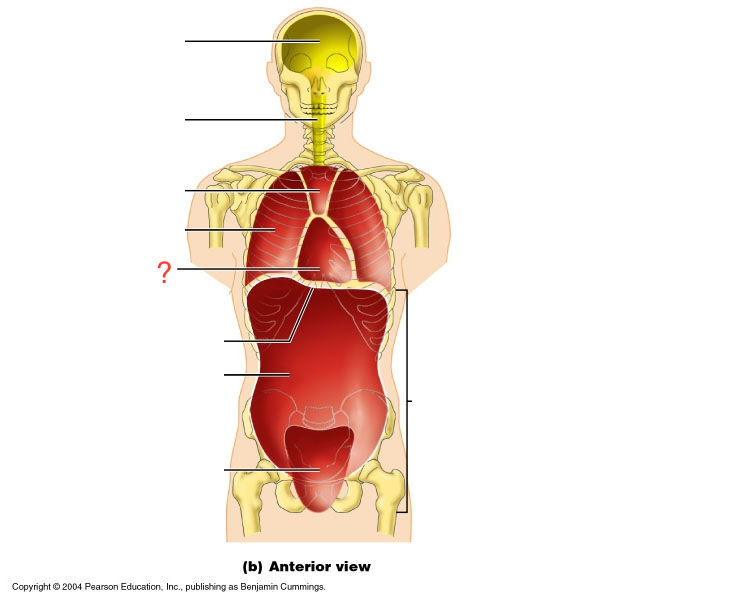
Located within the thoracic cavity; contains the heart.
Pleural Cavity
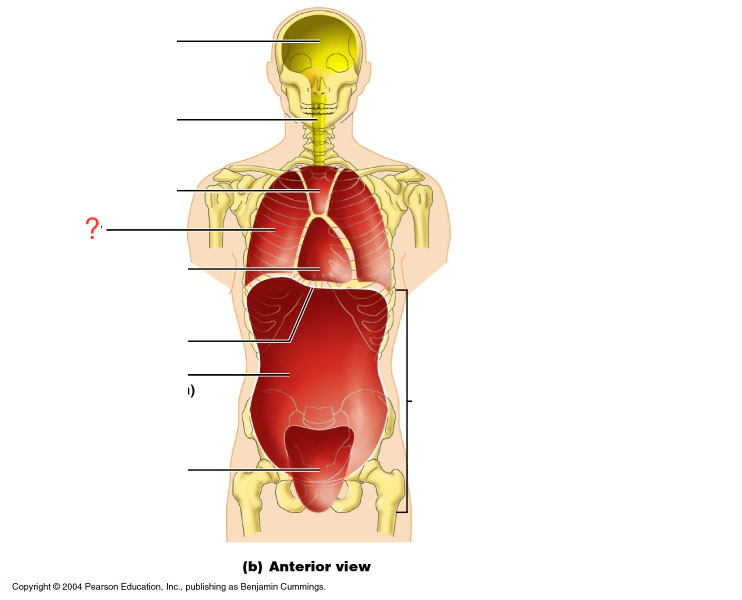
Located within the thoracic cavity; contains the lungs.
Abdominopelvic Cavity
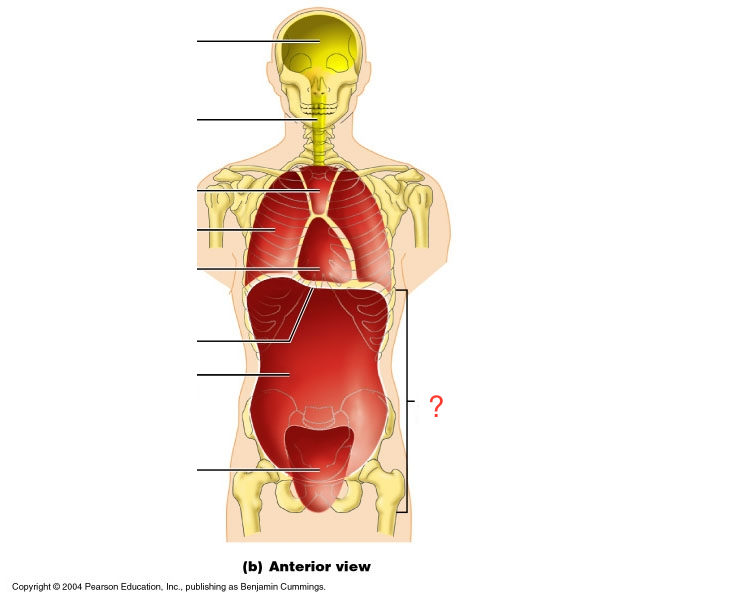
Located within the ventral body cavity, inferior to the diaphragm. Sometimes separated into two areas: abdominal cavity and pelvic cavity
Abdominal Cavity
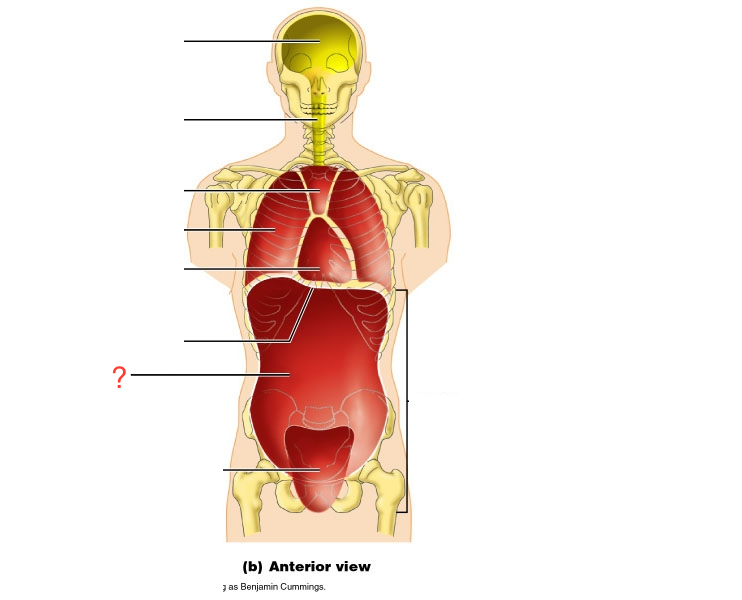
The area that houses the stomach, intestines, liver, and other organs.
Pelvic Cavity
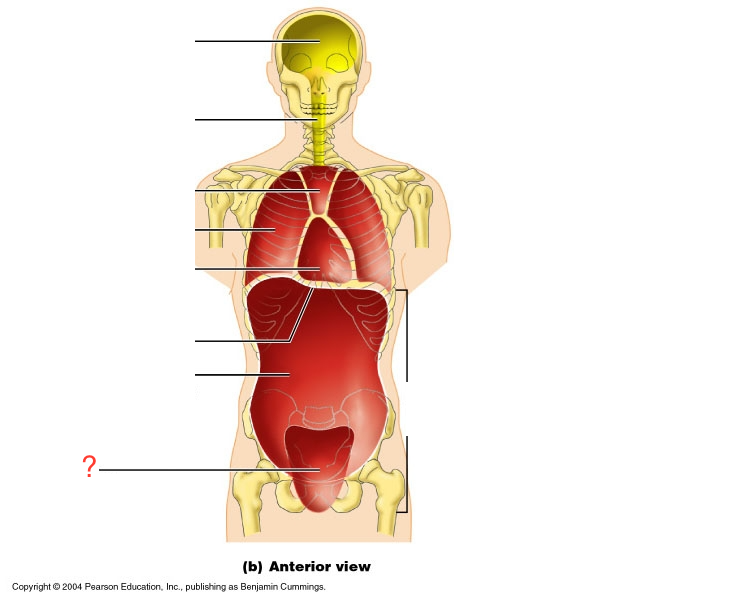
The region that is partially enclosed by the bony pelvis and contains the reproductive organs, bladder, and rectum.
Dorsal Body Cavity
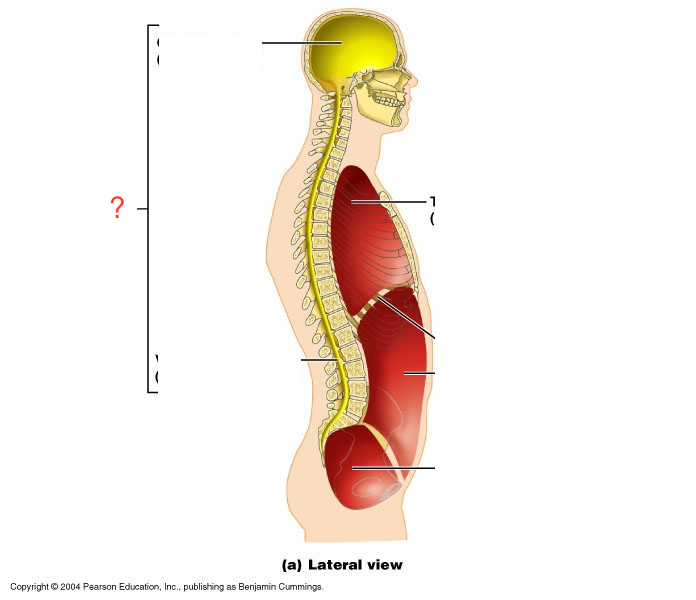
Subdivided into the cranial and vertebral cavity
Cranial Cavity

Lies within the rigid skull and encases the brain
Vertebral (Spinal) Cavity

Runs through the bony vertebral column to enclose the delicate spinal cord
Nasal Cavity
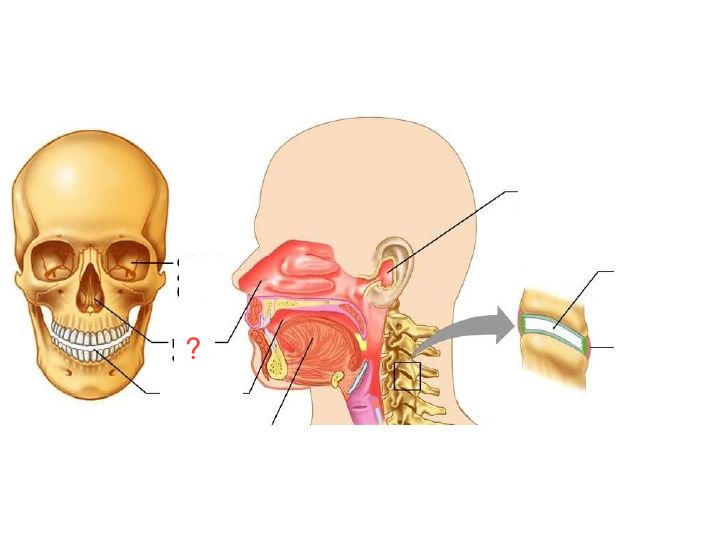
Located within and posterior to the nose; part of the passages of the respiratory system.
Oral Cavity
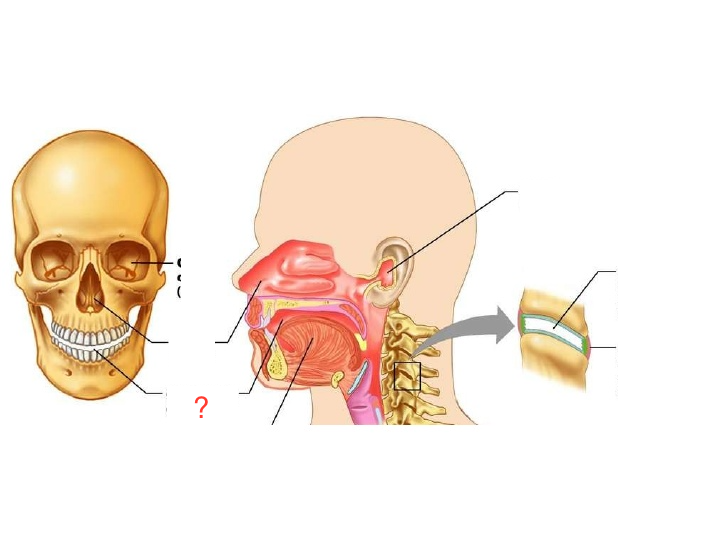
Commonly called the mouth; contains the tongue and teeth.
Orbital Cavity
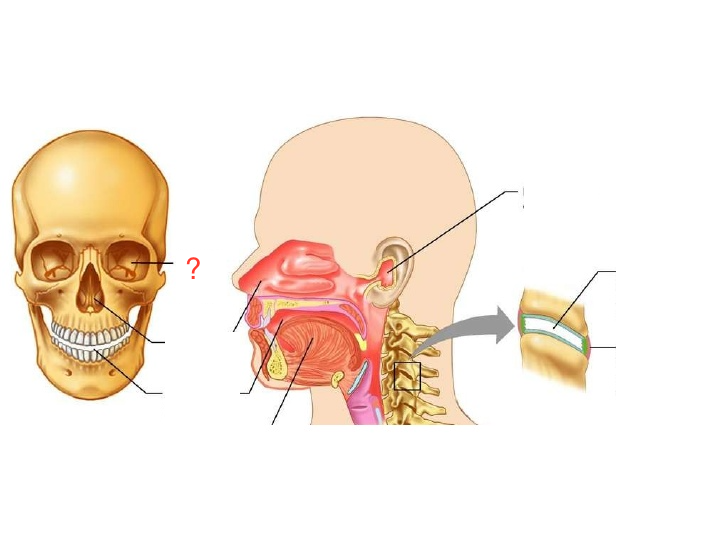
House the eyes and present them in an anterior position.
Middle Ear Cavity
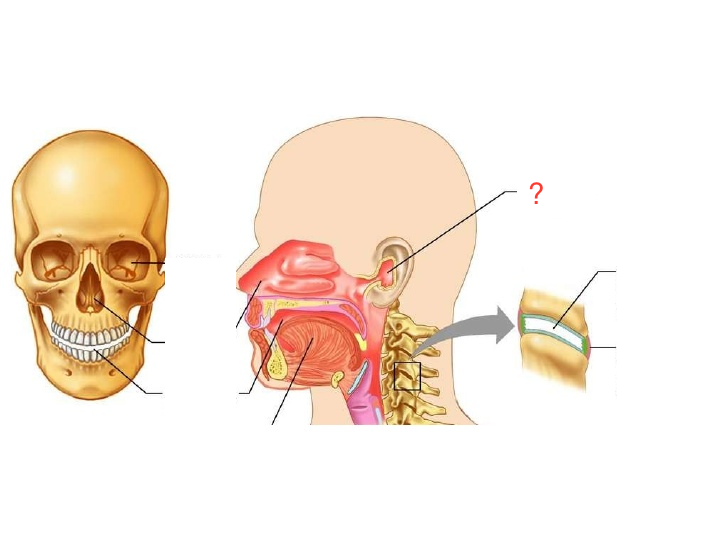
Lies jus medial to an eardrum and is cared into the bony skull. Contains tiny bones that transmit sound vibrations to the hearing receptors in the inner ears.
Synovial Cavity
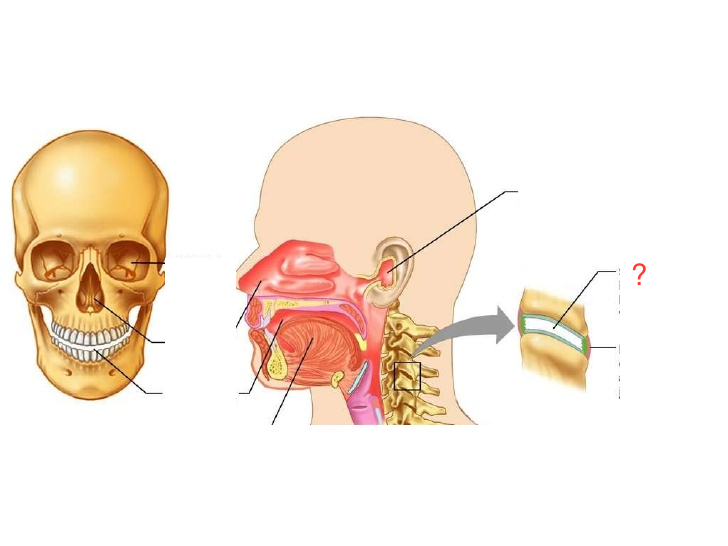
Joint cavities - they are enclosed within fibrous capsules that surround the freely movable joints of the body, such as those between the vertebrae, knee, and hip joints.